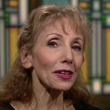Itzhak Perlman
Primo Artists
Back in 1995, the Public Broadcasting System approached violin virtuoso Itzhak Perlman about hosting “In the Fiddler’s House,” a special program about klezmer music. A traditional style associated with Eastern and Central European Jews, klezmer is probably most familiar from its performance at weddings and other events, at which it invariably drives people straight to the dance floor.
Over the years, klezmer (a combination of the Hebrew words for “vessels of song,” meaning musical instruments) has also absorbed aspects of Greek and Middle Eastern music as well as jazz. And it can be heard in everything from Gustav Mahler’s Symphony No. 1, to works by such 20th-century Jewish-American composers as George Gershwin, Aaron Copland, Leonard Bernstein — and jazz bandleaders Benny Goodman and Artie Shaw — to pieces by that non-Jewish Russian composer, Dmitri Shostakovich. It also is an essential element in such Broadway musicals as “Fiddler on the Roof” and “Oliver!,” and you can detect many visual references to klezmer musicians in the paintings of Marc Chagall.
All that said, in a recent phone conversation with Perlman, he admitted that while he had probably heard klezmer recordings on the radio as a child in Israel, he was primarily focused on classical music. (Born in Tel Aviv in 1945, he moved to New York at the age of 13 to study at Juilliard.) “It was years later, after getting that PBS invitation, that a klezmer group asked me if I’d like to jam with them just for fun,” said Perlman, who won an Emmy for his CD recording of “In the Fiddler’s House.”
“So for a few days I went to Poland, where my father grew up, had delicious matzo balls and kreplach at a Jewish restaurant owned by young non-Jewish Poles, began listening to wonderful old recordings of klezmer music and decided to host the program.”
“The basic tune is a skeleton to build on. And if there is a jazz influence — which is less Jewish and more bluesy — you can tap into different emotions.” — Itzhak Perlman on klezmer music
A klezmer band can have a very varied group of instruments — from violin, clarinet and flute to bass, trombone, drums, accordion and the cimbalom, a stringed instrument played with two sticks.
There is a strong element of improvisation involved, “which I always find fascinating, and while I do have sheet music, I only use it as a guide. The basic tune is a skeleton to build on. And if there is a jazz influence — which is less Jewish and more bluesy — you can tap into different emotions. There also is a lot of variety in how we can end a piece.”
When we spoke a few months ago, Perlman was still not entirely certain about who his fellow musicians for this concert would be, although he would certainly be turning to his frequent collaborators: music director Hankus Netsky (who leads the Klezmer Conservatory Band of Boston), Andy Statman (of Brave Old World, an American and German band) and musicians from both ensembles.
The essential elements of klezmer have a long history, but the form arrived in the United States, along with the Eastern European Jewish immigrants in the late 19th and early 20th century. It was notably popular in the 1920s, faded during the World War II era and then enjoyed a rebirth in the 1980s. “Its popularity goes through cycles,” Perlman said. “I’m not quite sure why and how this happens.”
Asked if he uses a particular violin when playing klezmer, he explained: “I have two violins [one of them a Stradivarius], and sometimes I use one that I can connect a little microphone for amplification, because then I don’t have to worry about being heard if there’s a bass and drums in the band.”
On whether dancers would be part of the Orchestra Hall program, Perlman laughed and said: “The audience will supply the dancers, something I highly encourage. I’ve played klezmer concerts in many classical settings, and I want the audience at Orchestra Hall to just get up and dance in the aisles.”
Originally published in Jewish Chicago: The JUF Magazine. Reprinted with permission.


